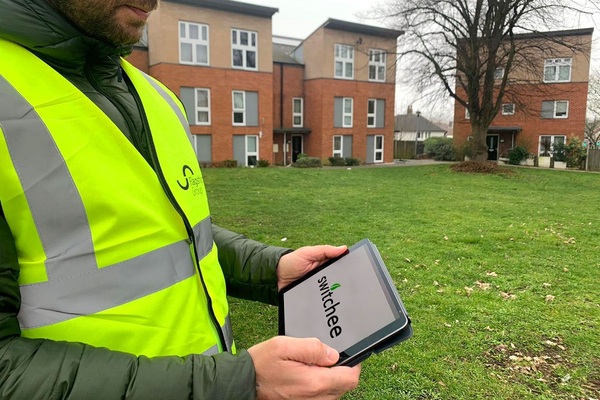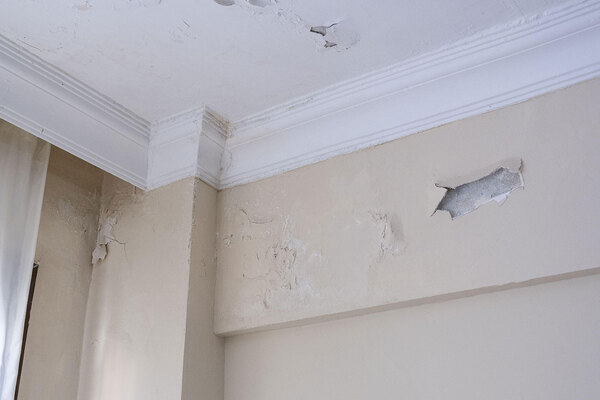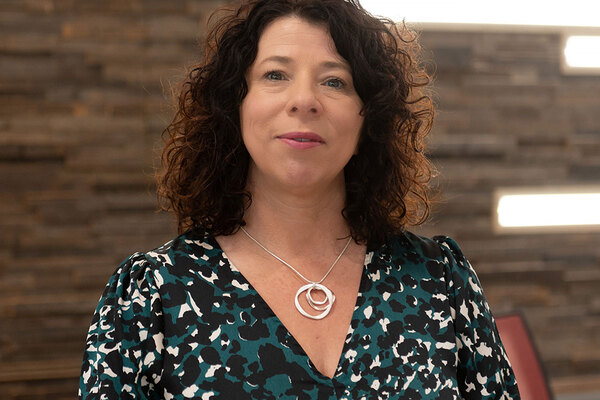Scotland leads the way for sector’s biggest roll-out of smart technology
Stirling Council is installing smart sensors across its homes to monitor temperature, humidity and CO2 levels, to keep tenants safe and homes maintained – and it has been a success. Here’s why
In association with:

Stirling Council is embarking on the UK housing sector’s biggest roll-out of Internet of Things (IoT) sensors. Over the next eight to 10 years, the council is planning to install around 50,000 sensors in its 6,000 properties.
To date, it has completed work on 60 homes, with a target of 460 by the end of this financial year.
These sensors monitor temperature, humidity and CO2 levels. They feed data to the council, and to a mobile app called HomeLINK that can alert tenants to any potential issues – for example, if it is too hot or too
cold, or if humidity levels are too high.
For the council, the aggregated data will be used to help inform future asset management decisions. It will also alert staff to any deterioration in the condition of properties, enabling them to take any remedial action early.
But not everyone has welcomed this new dawn. The spread of digital tech throughout our lives, both at home and at work, has been accompanied by warnings and scare stories about how our data is collected and used – so when you tell tenants you want to install data-gathering sensors in their homes, some degree of wariness is understandable.
“When we first introduced this, it was all brand new. And people were worried about it – they were sceptical,” says Alexa Scrivener, transformation lead team leader in Stirling Council’s housing department. So how did the council respond?
Slow and steady wins the race
The foundation for success is the strength of the council’s existing relationship with its tenants. “We have had excellent tenant engagement for years,” says Ms Scrivener. “Having that in place prior to rolling this out has worked brilliantly.”
Patience has been another key ingredient in overcoming tenants’ misgivings.
“We weren’t in a rush to do this,” she explains. “We could take as much time as we liked, engaging with tenants and listening to what they had to say.”
Direct, face-to-face engagement was also crucial because it gave the council a chance to show residents around the technology and explain its benefits directly.
“The standard kind of engagement does work – the consultations, the explanations and repeated reassurances – but when we got the app, and we could show people what it could do, I think that probably helped a few off the fence,” says Stephen Swan, housing property and asset management service manager at Stirling Council.
And by taking its time, the council gave tenants the chance to spend time with the app – and to spread the word themselves.
“Some people said ‘no way’; other people got it, and they talked about it,” says Ms Scrivener. “We had tenants that were talking about it to each other: ‘Will you have a look at this?’ And then the people that had said ‘no’ previously said: ‘Actually, I want to try that.’
“So it was really the power of peer to peer, rather than the forcefulness of the local authority. It’s human nature.”
The council also worked with TPAS (see box) to ensure it was getting its message across in the most effective way.
Sensor installation programme
TPAS Scotland worked with Stirling Council on the sensor installation programme. Here, Michael Hill, national consultancy manager at TPAS England, sets out a few key principles for landlords embarking on similar projects.
“You should give sufficient lead-in time so that tenants can ask all the questions they need to feel comfortable with the process and confident in what will happen next. Fully explain the rationale and expected benefits alongside any potential negative impacts, if there are any.
“The key is to be really honest and transparent. Without this level of openness, landlords could run the risk of allowing uncertainty to build – and whenever people feel uneasy about something, they are more likely to reject whatever it is you are looking to do.
“Landlords should find tenants who have been through a similar process to share their experiences, as with this kind of thing, people look for something, or someone, to relate to.
“This is really important as without any comparisons, it is difficult to balance the potential impact against the disruption that any change brings.
“It is also important to try to bring the topic to life. Use different mediums such as animations or short videos alongside any written material to make sure they are covering off the different ways in which people take information in.
“One last thing – many a great project has lain smashed on the rocks of insufficient time. I can’t reiterate the need to plan for enough time to ensure tenants are not rushed – or pushed – into agreement.”
Wise words
What advice does the council have for other social landlords thinking about trialling or rolling out this technology?
“It is a lot of hard work. It’s something new, it’s innovative,” says Ms Scrivener. “You need to do your research, you need to engage with others who are already doing this, you need to engage with your residents. And you need to think about what you want out of it.”
She also recommends that organisations bring as many staff on board as possible in order to maximise the points of contact between themselves and their tenants.
“Make sure that you have housing officers, housing assistants, income maximisation officers, supervisors, the people that do the capital investment, the people that do the responsive repairs on board. Do not think you can bring this forward with just a couple of people. Because if you do that, you’re going to be following the same footsteps over and over again.”
In numbers
60
Homes Stirling Council has completed installations on so far
460
Homes the council wants to complete work on by the end of this financial year
Happy customers
The technology is already making a difference to tenants, Ms Scrivener says – and that can only help it gain traction.
“We have a few residents that really, really like it,” she adds. “And the feedback we are getting from our wider tenant group is really positive.”
Robert Cairney is a Stirling Council tenant – and a big fan of the new technology that is now monitoring his home.
“I was initially sceptical about what the sensors and HomeLINK technology being put into my home would bring in terms of financial or health benefits,” he says. ‘‘But this new technology for homes like mine is fantastic because it helps me to feel safer, to live in a healthier environment and to reduce costs.”










